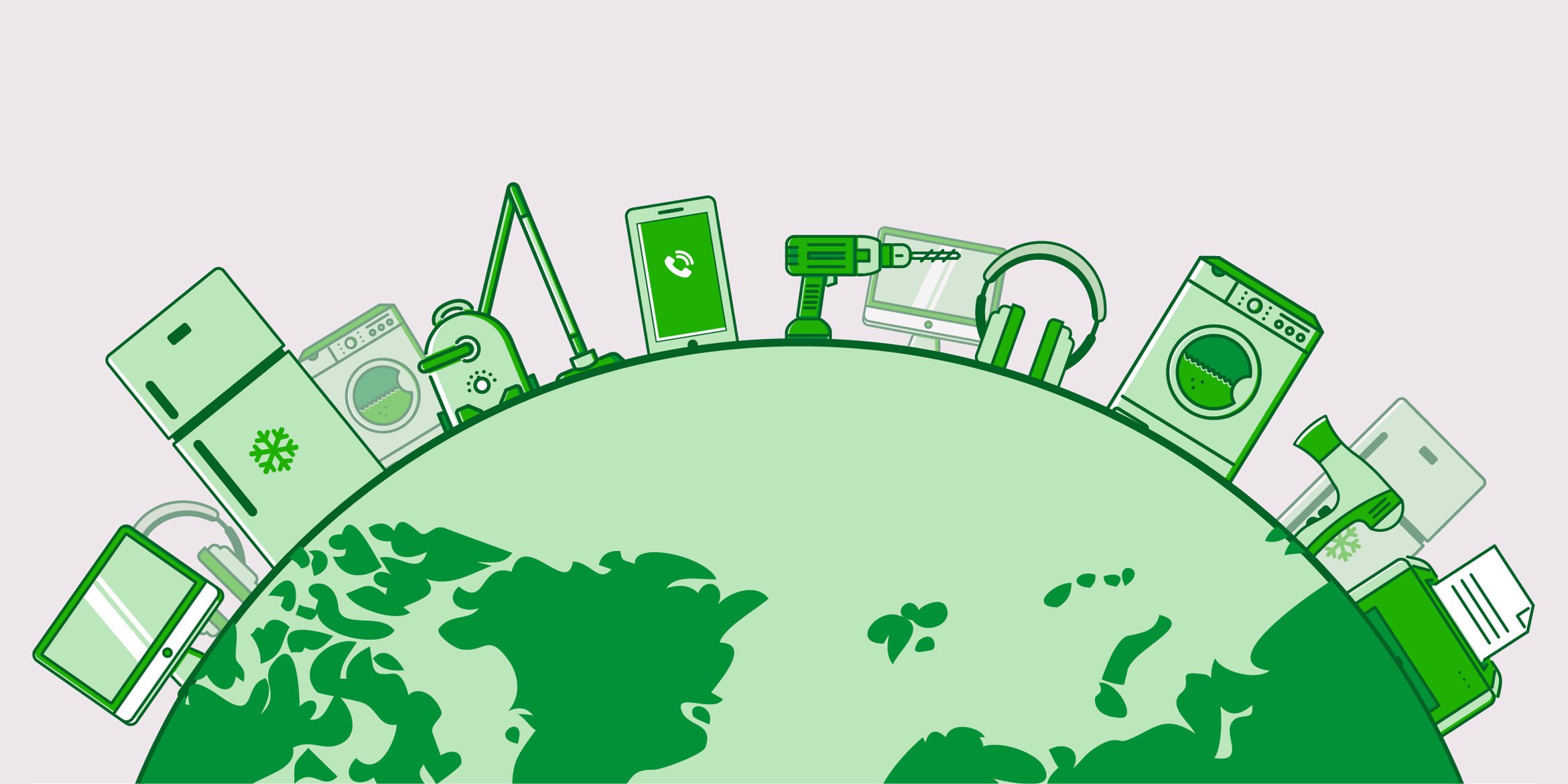This is an old press release and the information may be outdated
On October 14, International E-waste Day takes place for the second time, aiming to reduce the burden that e-waste places on the environment and save natural resources. More than 100 organizations from 44 countries stand behind the initiative to encourage recycling of e-waste.
Fifty million metric tons of e-waste is generated every globally year. Much of it is handled in an unsafe way, causing pollution, human health hazards and the loss of valuable finite resources. E-waste is the world’s fastest growing waste stream and most countries have difficulties handling these vast amounts of discarded products in a responsible and resource efficient way. In 2016, only 20 percent of electronic waste was recycled globally.
International E-waste Day puts a spotlight on the fact that, while the focus has been on collecting products, not enough effort has gone into building infrastructure for processing the waste or safely recovering used materials. This has led to a shortage of facilities where e-waste can be managed safely. Instead, e-waste is mixed with residual waste, where it is often incinerated, placed in landfill, or exported to developing countries. E-waste exporters generally choose destinations lacking effective legislation that regulates how e-waste should be handled.
In these countries, products are manually disassembled, burned in the open air or dissolved in acid by local laborers, including children, without adequate protective equipment — leading to severe health problems. Electronic products contain a number of toxic substances hazardous to human health, with documented risk to the brain nervous system, lungs and kidneys as well as links to certain cancers. Toxic residues can leak and contaminate the soil, air and water, affecting surrounding ecosystems where the local communities grow their food, hunt and fish. The hazardous substances are also spread to other continents through the air and the sea.
To prevent e-waste, the global sustainability certification TCO Certified has a circular approach to the production and consumption of IT products. By requiring that IT products are durable, repairable and upgradeable as well as recyclable, products can live longer and materials can be recovered.
“There is not one big solution to this problem — it’s all about taking many small steps in the right direction. For example, with TCO Certified, generation 8, the use of hazardous substances in IT products is reduced or eliminated, to enable recycling of materials when the product has reached the end of its usable life.” says Andreas Rehn, Development Manager at TCO Development, the organization behind TCO Certified.
He continues:
“TCO Certified also requires that important spare parts are made available and that batteries are replaceable so we don’t have to discard products just because the battery has lost its capacity.”
E-waste Day: what you can do
About International E-waste Day
The purpose of International E-waste Day is to encourage consumers to recycle their e-waste. Behind the initiative stands the WEE Forum, a European association for electrical and electronic waste collection and recovery systems, and more than 100 of its members and external stakeholders.
Together toward sustainable IT
TCO Certified is the global sustainability certification for IT products, empowering both IT buyers and brands to make more responsible choices. Our comprehensive criteria are designed to drive social and environmental responsibility and are updated continuously to push sustainability where it matters most. Compliance with all criteria is always independently verified for every product. Our Roadmap for Sustainable IT is the long-term plan for addressing issues in four key areas: climate, substances, circularity and supply chain. By using TCO Certified, you join a global movement for sustainable IT.
Contact
Dennis Svärd, Global PR Manager
dennis.svard@tcodevelopment.com
Mobile: +46 (0) 704 804 094



